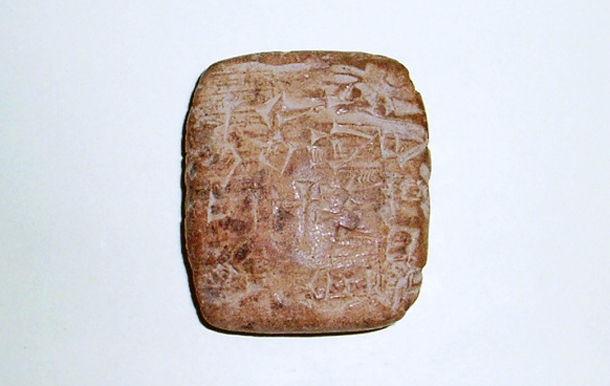The blog of The Huntington Library, Art Museum, and Botanical Gardens.
What is the Oldest Item in the Library?
Posted on Tue., April 9, 2013 by

Receipt for a cow, Ur III, 2112–2004 B.C., year two of King Amar-Suen. Huntington Library, Art Collections, and Botanical Gardens.
This is one of the most common questions asked of the Library staff. The Gutenberg Bible, the Ellesmere Chaucer, and first editions of Shakespeare’s plays come to mind when considering famous older items in the Library’s collections. However, not many are aware that The Huntington holds an object dating to 2112 B.C. that depicts a rather mundane event: the sale of a cow.
This tiny square “receipt” is less than two inches wide and was created in ancient Sumer (present-day Iraq). It demonstrates an early form of writing known as cuneiform, which began as pictographs, similar to Egyptian hieroglyphs. It later developed into a more abstract form to include wedge-shaped markings such as the ones on this tablet. Cuneiform is depicted in many items from Sumer and includes more than a thousand distinct figures.
The next time you go shopping and are offered a receipt for your groceries, consider that one day your receipt may end up in the vaults of a research library, revered for its age and depiction of life in the early 2010s.
Catherine Wehrey is The Huntington’s reader services assistant for the Dibner collection.